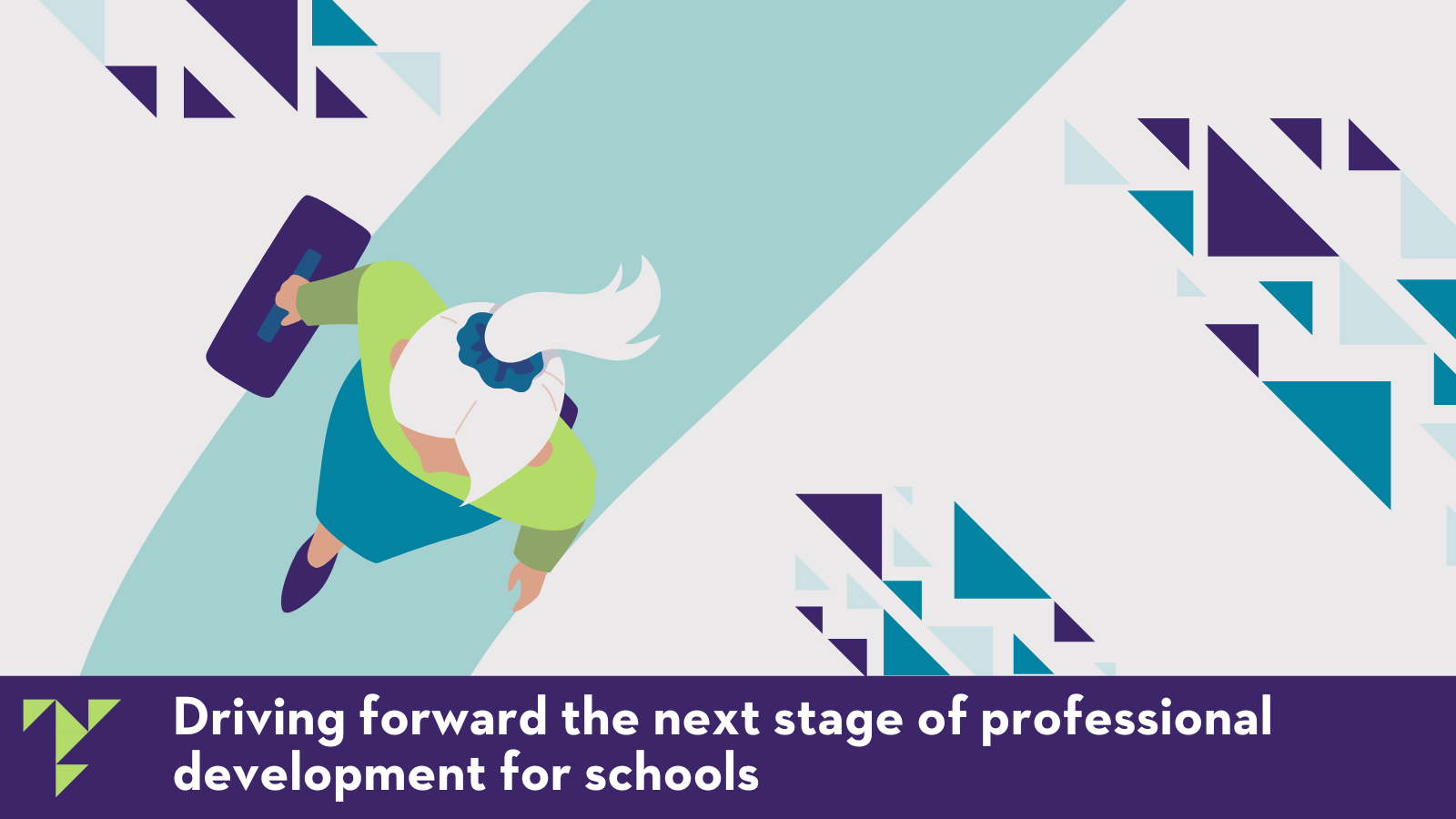Do you have responsibility for whole-school literacy? Or you may aspire to be a senior leader and have whole-school responsibilities. Perhaps you’re passionate about literacy but not leading on it just yet.
TDT’s Partnerships and Communications Manager, Ariana Wells, looks at five stand-out recommendations from TDT’s NPQLL that may support literacy leaders in beginning their leadership journey. Having worked on the NPQLL content as a Curriculum Designer and has been a whole-school Literacy Coordinator and English teacher for 16 years, she shares some stand-out tips that literacy leaders may find very useful when planning the implementation of literacy initiatives in their school.
“Literacy is fundamental for success in school and later life. Students who cannot read, write and communicate effectively are highly unlikely to access the challenging academic curriculum in secondary school and are more likely to have poor educational outcomes across all subjects.”
(Ricketts, J., Sperring, R. and Nation, K., 2014)
The Challenge of Literacy for All
Leading literacy is challenging, no matter what your context might be. However, the good news is that effective literacy learning depends on a range of approaches (EEF, 2019), not a regimental fit. This means that teachers have the potential, with the support and guidance of literacy leads, to shape better outcomes for pupils across the curriculum.
The NPQLL has been designed to present the latest evidence, develop your knowledge and understanding of literacy. It is also shaped to help teachers apply the evidence within their school context, year group, key stage, or phase. The NPQLL is a nationally recognised, prestigious, government-backed qualification giving you the confidence and expertise to lead literacy.
Leading literacy successfully across the curriculum could feel like an overwhelming task. That’s why I have gathered the top five recommendations of the NPQLL that I think could get you started on your leadership journey.

1: Identify literacy priorities and implement them into the curriculum
Before initiating a new literacy intervention or practice, literacy leaders should actively reflect on the foundations for good implementation.
This involves the following:
- Treating implementation as a process, not an event; planning and executing it in stages.
- Creating a leadership environment and climate conducive to good implementation.
Successful implementation happens in stages and unfolds over an extended period. It is not a single event that takes place when the decision to adopt a new literacy practice is made, or on the day when training begins; it’s an ongoing process. Implementation processes begin before an adoption decision and should last for a long time after (EEF, 2024).
During the implementation phase, it is paramount that senior leadership teams are educated on the problems surrounding literacy in their context. They should also consider how they can support literacy across the curriculum and how they can support you.
You can begin this process by asking yourself these questions:
- How well does your context undertake the implementation of literacy priorities in stages rather than as a single event?
- How might you begin implementing literacy priorities in stages over an extended period rather than as a one-off literacy practice?
Your work will include leading the implementation of strategies to improve the quality of literacy across your context, whether working at a middle, senior, phase, department, or organisation level.
Further reading:
2: Embed disciplinary literacy strategies
Ensuring teachers recognise that literacy is both general and subject-specific can be challenging, but it is a discipline that cannot be ignored. Leaders of literacy may have to work hard to convince staff that literacy is not just the responsibility of English teachers but a whole school responsibility and that literacy is essential for success across the curriculum.
Pupils need to be able to communicate effectively, to read and write. They need the tools to be able to access challenging academic curriculum content in school and beyond. For pupils to advance academically from primary to secondary school, they need to be able to appreciate how scientists, mathematicians, and other experts use literacy.

To succeed in these disciplines, they must learn how to engage in specialist literacy (disciplinary literacy) beyond general literacy skills. Disciplinary literacy ‘adds awareness, insights, and abilities that will allow students to adjust and deepen their literacy practices appropriately to match the specific academic social contexts and intellectual demands of the disciplines.’ (Shanahan, 2019).
As a literacy lead, the next step is supporting teachers to ensure all pupils are aware of discipline-specific language. Teachers should also help them to use this language effectively.
Further reading:
- EEF Blog: What do we mean by ‘disciplinary literacy’?
- EEF-Improving Literacy in Secondary Schools
- Shanahan-Disciplinary Literacy in the Primary School
3: Build language learning environments
The importance of promoting good oral language skills in school contexts is well established. Oral language skills are the foundation of literacy skills, reading and writing (Shanahan, 2006). Certain kinds of talk, such as discussing, collaborating and problem-solving, help children with academic subjects (Resnick et al., 2018) . Establishing high-quality language learning environments can provide both support for literacy (Snowling et al. 2011) and enhance learning (Mercer et al. 2010).
How can you help build a language-rich learning environment?
As leaders of literacy, it is important to understand the ways in which children develop their receptive and expressive language skills. This knowledge will enable you to support colleagues in monitoring and developing classroom interactions and opportunities for language development. Your context has the potential to become a rich source of language and vocabulary exposure. However, this does not happen by chance; you will need to support colleagues on how to build language-rich classrooms.
To support language development at school, pupils should experience high-quality talk through effective modelling of spoken language. They should have opportunities to interact socially and collaboratively with their peers, they should listen to and participate in conversations, and develop their vocabulary through being immersed in the language of stories and academic texts. This can be achieved through dialogic teaching.
Dialogic teaching ‘demonstrates the intimate and necessary relationship between language and thought and the power of spoken language to enable, support and enhance children’s cognitive development’ (Alexander, 2018). Dialogic teaching, in its simplest sense, develops patterns of classroom interaction that harness the power of talk to enhance students’ speaking and listening skills and, inevitably, their thinking and understanding.
The EEF recommendations focus on prioritising language through purposeful spoken language activities. These might include promoting high-quality dialogue, the explicit teaching of structured talk, opportunities for collaborative discussion, and the direct teaching of vocabulary. Teachers should model high-quality talk within learning environments which actively promote the development of effective communication and dialogue skills, and leaders of literacy can support them to achieve this.
Further reading:
4: Improve reading fluency
Reading fluency is the ability to read with accuracy and automaticity with the appropriate intonation and expression to bring meaning to words and enable the text to make complete sense. Fluent readers can read quickly, accurately and with the expression required to bring meaning to the text (National Reading Panel, 2000).
With regular, explicit teaching of the three aspects of fluency (accuracy, automaticity, and prosody), most pupils will develop a secure understanding of how to accurately decode words and practice prosody when reading. In some cases, further intervention may be required to develop pupils’ fluency.

It is, therefore, critical that literacy leaders have clear processes established that allow for accurate diagnosis to ensure that teachers can prepare the correct type of intervention for that pupil (EEF, 2020).
Reading fluency is not just a primary concern; secondary school pupils may still struggle with reading fluency. This can become evidence as they encounter a broader range of tier-two vocabulary and more challenging academic language in secondary school. Teachers may need support on how to facilitate decoding and pronunciation of words during reading-aloud classroom activities.
Literacy leaders can support teachers by reviewing instructional activities within the delivered curriculum that improve reading fluency.
Further reading:
5: Deepen understanding of the writing process
Graham and Harris (2005) let us know that pupils ‘can succeed at writing when they are provided with explicit and systematic instruction’ around the transcriptional components of writing, spelling, and handwriting. They also argue that in many classrooms, not enough attention is paid to teaching strategies to support the planning stages of writing. Spending more time focusing on this early part of the writing process increases writer motivation, develops knowledge about writing and deepens the quality of pupils writing across the genres.
Literacy leaders can ensure that explicit teaching (including modelling and shared writing, with time to practice and apply new learning) is embedded at all stages of the writing process. They can ensure pupils acquire strategies to be able to evaluate their work and that of their peers. Pupils should also learn how to receive feedback and how to act on it.
Literacy leaders can ensure learning is revisited and embedded so that it becomes automatic and moves from the short-term into the long-term memory. They can additionally ensure teachers provide exemplars of high-quality writing so pupils can see how good writing works and can start to replicate it.

As a leader of literacy, you may need to support colleagues by deepening their understanding of the elements of the writing process. They may need support, guidance, strategies, and resources to help them teach the components of writing explicitly. Teachers will also need to be confident in assessing the writing skills of individual pupils to identify areas for improvement. They will then need tools to effectively support and scaffold learning to address individual issues.
Literacy leaders can ensure that their context supports a rich reading curriculum that exposes pupils to several text types and styles that can support their writing development.
Further reading:
- Graham-Teaching Students to be Effective Writers (Primary)
- Graham-Teaching Students to be Effective Writers (Secondary)
Conclusion
Through supporting colleagues and thoughtfully implementing proven strategies, leaders can have a significant impact on how literacy is seen and implemented within their setting. This in turn can help pupils access new ideas, communicate better, and unlock doors for their future.
TDT provides supportive, evidence-based NPQs to teachers across the country, including the NPQ for Leading Literacy. If you are interested in being a part of our next cohort, you can find out more information here.
Originally posted Spring 2023, Updated for Autumn 2024



